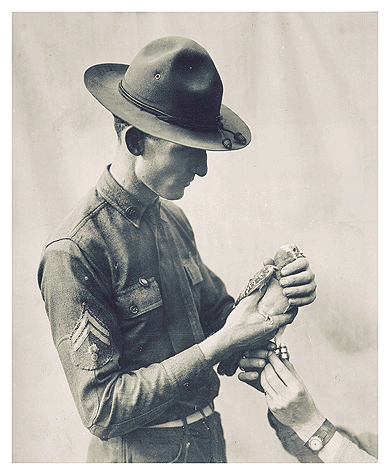I should think that there are few things more amazing than the variety of birds known as “
homing pigeons” or “messenger pigeons.” They were widely used during both World Wars I and II to deliver messages from the field to various behind-the-lines command posts, which they had been trained to consider as “home.” They have been known to be able to return to home destinations as distant as 1000 miles. In addition to their battlefield role, they were also used as mail carriers (called “pigeon post”) by postal services, and by newspaper reporters to deliver stories from the field to the home office.
To send a message, the information would be recorded on a lightweight paper, which was then rolled up and secured within a tube-like capsule (along with a small pencil) attached to the pigeon’s leg [see photo below].
Shown above is a page from the January 1919 issue of The Popular Science Monthly, which features a grocery wagon that has been converted into a “home” for a “pigeon flying corps,” consisting of seventy-two messenger pigeons.
At the bottom is a dog which apparently has been trained to carry a pigeon (in a special container attached to its back) to the dog’s “master,” a soldier somewhere in the field. That person could then remove the pigeon, write a note, and send it “home” to the landlord of the pigeon hotel.
A wonderfully curious aspect of this is the coloration of the wagon. Looking closely at the large photograph, it becomes apparent that the wagon has been “camouflaged” with paint so as to continue the pattern of the rock wall and the foilage above and behind it. It was of course essential to prevent ones pigeons from being killed or wounded.



